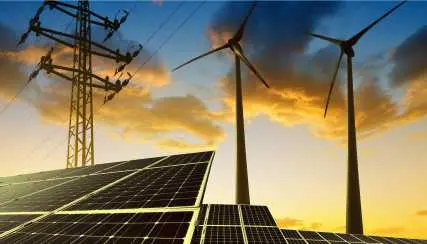Global High Voltage Cable Market is projected to be worth 90.16 billion by 2034 and is anticipated to surge at a CAGR of 11.66%.
High voltage cables are specially built electrical cables that transport electricity at high voltages, usually above 35 kV. These cables are critical for efficient long-distance power transmission, which reduces energy losses over long distances. They are widely used in power grids, industrial facilities, and renewable energy systems to connect generation sources to substations or distribution networks. High voltage cables are made up of conductors, insulation, and protective layers that assure longevity, safety, and performance under high electrical loads.
Drivers:
Key advancements in the high voltage cable market include the rehabilitation and refit of ageing grid infrastructure, which improves power system dependability and performance. Furthermore, the proliferation of microgrid networks, particularly in remote or underserved areas, is driving up demand for efficient and adaptable cable solutions. The integration of sustainable electrical networks, which aid in the shift to greener energy sources such as wind and solar, is a significant growth driver. These networks necessitate improved high voltage cables to handle greater load and provide consistent power transfer. These forces are driving global investment and innovation in high voltage cable technologies.
Challenges:
The high voltage cable market has constraints due to the slow pace of technological advancement in emerging countries. Many countries lack the infrastructure, technical competence, and investment capacity to implement innovative cable networks or upgrade current grids. As a result, we continue to rely on obsolete gearbox methods, which leads to inefficiencies and greater maintenance costs. Furthermore, regulatory uncertainty and a lack of information about the long-term benefits of high voltage technology impede implementation. Without enough support for research, skilled labour development, and modernisation initiatives, these countries struggle to stay up with global innovations, eventually reducing the overall growth of the high voltage cable market.
Market Trends:
The high voltage cable business is experiencing substantial expansion, owing to increased commercialisation and ongoing digitalisation of industries, which is supporting market growth. Furthermore, rigorous corporate and public investments, as well as increased linked economic growth through the construction of electrical infrastructure, will support the business scenario in the anticipated timeline. Furthermore, these strategic projects will reinforce and create advanced and safe cabling solutions to fulfil expanding energy demand.
Global High Voltage Cable Market Key Players:
Alfanar Group, Brugg Kabel, Ducab, Elsewedy Electric, Furukawa Electric, Gupta Power, Iljin Electric, Jeddah Cables, LS Cable & System, Mitsubishi Electric are just a few of the major market players that are thoroughly examined in this market study along with revenue analysis, market segments, and competitive landscape data.
Global High Voltage Cable Market Segmentation:
By Voltage: Based on the Voltage, Global High Voltage Cable Market is segmented as; 110 kV, 110 kV - 220 kV, > 220 kV.
By Current: Based on the Current, Global High Voltage Cable Market is segmented as; HVAC, HVDC.
By Installation: Based on the Installation, Global High Voltage Cable Market is segmented as; Overhead, Submarine, Underground.
By Region: This research also includes data for North America, Latin America, Asia-Pacific, Europe, Middle East & Africa.
This study also encompasses various drivers and restraining factors of this market for the forecast period. Various growth opportunities are also discussed in the report.





































